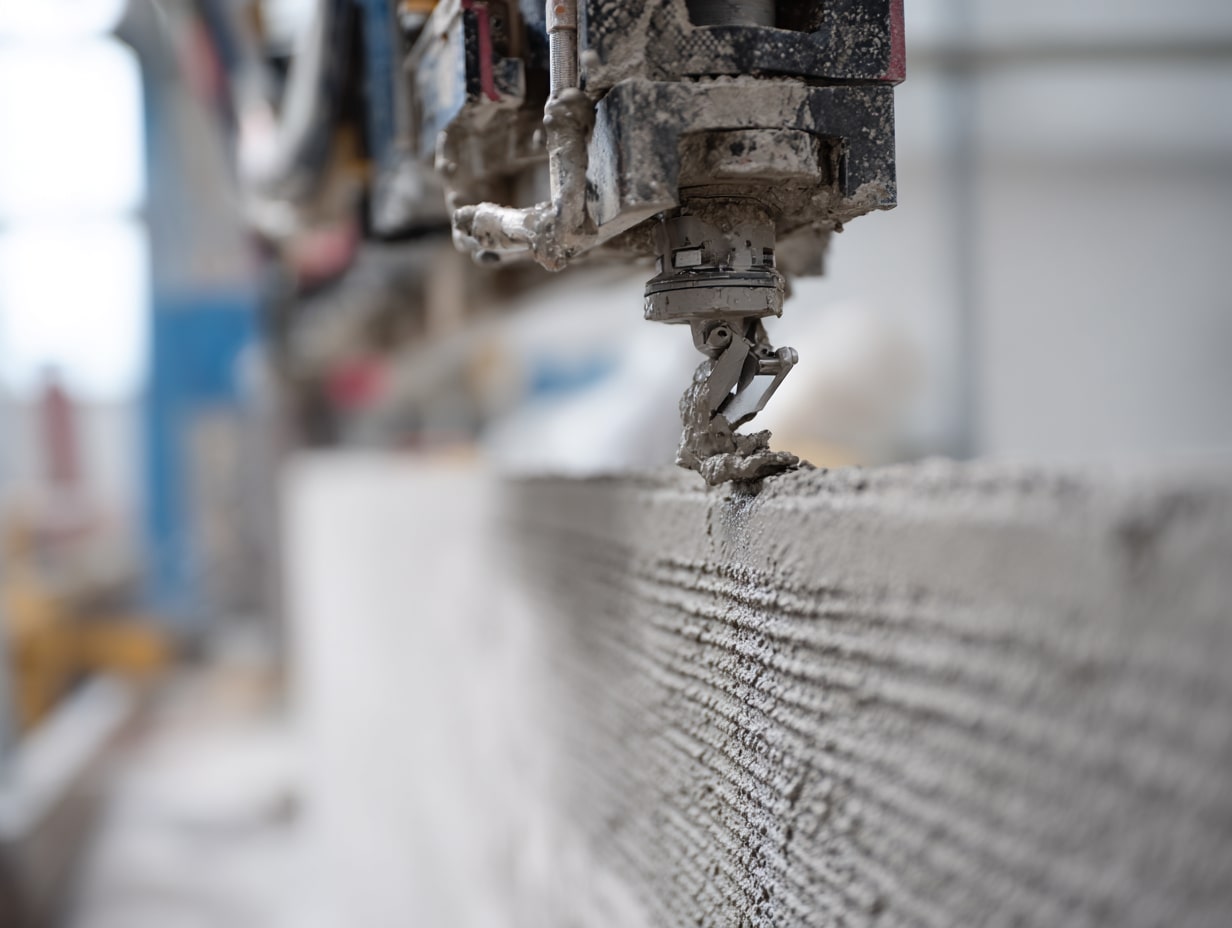- Home
- Articles
- Architectural Portfolio
- Architectral Presentation
- Inspirational Stories
- Architecture News
- Visualization
- BIM Industry
- Facade Design
- Parametric Design
- Career
- Landscape Architecture
- Construction
- Artificial Intelligence
- Sketching
- Design Softwares
- Diagrams
- Writing
- Architectural Tips
- Sustainability
- Courses
- Concept
- Technology
- History & Heritage
- Future of Architecture
- Guides & How-To
- Art & Culture
- Projects
- Interior Design
- Competitions
- Jobs
- Store
- Tools
- More
- Home
- Articles
- Architectural Portfolio
- Architectral Presentation
- Inspirational Stories
- Architecture News
- Visualization
- BIM Industry
- Facade Design
- Parametric Design
- Career
- Landscape Architecture
- Construction
- Artificial Intelligence
- Sketching
- Design Softwares
- Diagrams
- Writing
- Architectural Tips
- Sustainability
- Courses
- Concept
- Technology
- History & Heritage
- Future of Architecture
- Guides & How-To
- Art & Culture
- Projects
- Interior Design
- Competitions
- Jobs
- Store
- Tools
- More
Creating Harmony: Uniting Architecture and Garden Design in Your Space
Explore the fusion of art and utility in landscape architecture in our latest article. Discover how integrating structures with gardens can enhance aesthetics and provide practical benefits like shade, wind screening, and privacy. Learn about the use of texture, color, light, and form to create a visual dialogue between architecture and gardens.

We’ve all admired those stunning homes where the architecture and garden design seem to blend seamlessly. It’s not just about placing a few plants around a building. It’s a delicate balance, a true art form that requires a deep understanding of both disciplines.
In the world of design, we often talk about the importance of “bringing the outdoors in.” But what about the other way around? How can we extend the architectural lines of our homes into our gardens, creating a harmonious and visually appealing whole?
We’re here to delve into the art of integrating architecture with garden design. We’ll explore how to create a seamless transition between your home and garden, enhancing the beauty and functionality of both. So, let’s get started on this fascinating journey.

Table of Contents
ToggleUnderstanding the Relationship Between Architecture and Garden Design
In this section, we will further delve into exploring the deep relationships between architecture and garden design, particularly focusing on landscape architecture and the essential elements that contribute to its development.
The bond between architecture and garden design is innate. We look at our surroundings, our homes, our gardens not as separate entities but a single, integrated whole. Just as the flow of rooms inside a house is vital for functionality and aesthetic appeal, so is the flow of spaces in the garden. Excitingly, landscape design steps in to bridge this gap, marrying architecture with garden design to offer an outdoors that is an extension of the indoors.
As we dig deeper, you will discover that understanding these key elements of landscape architecture is an art and a science. The aim is to create a visually captivating, functionally efficient, and emotionally captivating space where architecture and garden become one.
While these principles form the foundation, the dynamics of architecture and garden design relationship are always evolving. And as we move forward, it’s the innovation and creativity in interpretation and implementation of architectural and landscaping ideas that keep the narrative enticing.
Principles of Integrating Architecture with Garden Design
Mastering the art of combining architecture and garden design requires a deep understanding of the fundamental principles of landscape architecture. The ultimate goal is always to create a harmonious blend between the indoor and outdoor spaces of a property, making the garden appear like an extension of the home. Let’s delve into the core principles that make this possible.
Unity highlights the importance of consistency in the design. It’s about achieving a common theme that runs through the home and garden, bringing both spacses together as one. Look at the house’s architecture, then mirror those lines, shapes, or colors in the garden.
Balance in landscape design is achieved by arranging elements in such a way that they provide a sense of equality in visual attraction. This can be symmetry or asymmetry. Regardless, it’s important not to let one part of the landscape overwhelm the other.
Proportion is another key element of landscape architecture. It involves correctly sizing the components within the landscape to create harmony. Scale and proportion are fundamental. Be mindful of how big plants and structures are in relation to each other and the scale of the house.
Next up is Focalization which refers to guiding the viewer’s eyes towards a focal point. This point can be an architectural element or a plant feature placed strategically in the landscape.
Sequence and Rhythm lend a sense of movement to the landscape. Sequence refers to the change over time, a progression in sizes or colors. Rhythm is the repetition of these elements to provide a sense of predictability and stability.
Our journey through the principles of integrating architecture with garden design captures the essence of what landscape architecture strives to accomplish: creating a balanced, harmonious environment where every element works together to form a single, unified whole. It’s not simply about filling a space with plants and structures, it’s about telling a story, creating an emotional journey for the observer. This is what makes the relationship between architecture and garden design not just a project, but an art form. These principles will aid in transforming any space into an outdoor haven that seamlessly blurs the line between indoor and outdoor living.
Remember, every garden is unique and outstanding landscape design truly reflects the character of the house, only adding to its charm and appeal. Let’s keep exploring how to enhance this symbiosis for a compelling and truly impressive integrated design.

Creating a Harmonious Transition Between Home and Garden
Landscape design plays an important role in crafting this harmony. It’s not just about planting pretty flowers or installing a new pathway. It’s about strategically positioning elements in space to complement the home’s architecture. It’s also about creating meaningful and effective transitions between indoor and outdoor spaces. This is where landscape architecture shines.
There’s a science and art behind establishing elements of landscape architecture that meld home and garden into a harmonious entity.
- Unity: The overarching aim is a unified vision. It’s done via repetition of similar characteristics, like color, texture, or shape, in both architecture and landscape design.
- Balance: The ideal design delivers visual weight equality. It’s achieved through color usage, object placement, or the methodology of the layout.
- Proportion: An effective architectural-garden integration requires correct size relations. Correlating the size of the garden with the house or scaling flowers to trees. It’s crucial to create a well-proportioned environment.
To achieve the above, a keen eye for detail, creativity, and a deep understanding of space utilization is needed. It’s not enough to recognize these elements of landscape architecture; it’s essential to know how to manipulate and combine them to create an appealing, unified design.
One should consider how different elements will interact throughout the seasons. For example, a flowering shrub might provide a pop of color in the spring and a structural element in the winter. Therefore, developing a design requires an understanding of plants, the local climate, and the architecture of the home.
Quite transformative, landscape architecture is the silent thread weaving the story of a house becoming one with its environment, silently whispering the art of integration. As one explores these areas, it becomes clear that designing a home with an accompanying garden is no isolated task but a multidimensional undertaking that, when done right, can significantly enhance our connection with nature.

Enhancing Beauty and Functionality Through Integration
Optimal landscape design is more than just a pleasing sight. It’s a harmonious combination that seamlessly blends both the built environment and the garden surrounding it. With the right implementation of landscape architecture principles, it’s possible to enhance the beauty and functionality of the entire space.
Remember, elements of landscape architecture go beyond what we see. They include aspects such as the practicality and functionality of the space, aiming to create a symbiotic relationship between the indoor and outdoor environments. Strategic use of elements such as light, texture, color, and form can significantly influence this integration.
To fully grasp this, consider the positioning of a garden. It should be in a visible, accessible location from within the home. That’s where landscape architecture comes in. It helps define pathways, vistas, and views, establishing the essential link between the house and the garden.
Furthermore, landscape architecture focuses on the utilization of space. Are there areas that are underused or cramped? These are the questions that guide the effective positioning of landscape features. Each element in the landscape, such as trees, shrubs, or even outdoor furniture, should serve a purpose – whether aesthetic, practical, or both. Plants and flowers, like climbing vines, ornamental grasses, or even potted peonies for sale, can be used to soften edges and add depth to patios or transitional zones.
Let’s look at an example. A well-placed tree can provide shade for a seating area, reducing the need for a built structure like a pergola. Such strategic planning illustrates how landscape architecture can not only enhance beauty but also improve functionality, contributing to an overall climate-responsive design.
Landscape design is a skillful blend of art and science that requires deep knowledge and creativity. It’s our tool in creating transitional, fluid spaces that forge an undeniable bond between the architectural structure and the garden environment.
In practice, landscape architecture takes many forms, each unique and dependent on the specifics of the site and the desires of the property owner. That’s the beauty of it – every site offers a different opportunity to showcase the art of integration, enhancing our connection with nature, optimizing space utilization, and creating various experiences throughout the seasons. So, let’s continue exploring this fascinating discipline, gaining insights and delving deeper into its intricacies.

Bringing It All Together: The Art of Seamless Integration
The beauty of landscape architecture shines through in its ability to create spaces that please the eye while serving a functional purpose. Here, we’ll focus on how this fusion of art and utility, seen so clearly in garden design, is woven seamlessly into the fabric of architecture.
In a masterful melding of landscape design, the transition between a structure and its surrounding garden should feel natural and effortless. The strategic placement of plants, trees, and ornaments to allow the incorporation of natural elements plays a vital role here. And it’s not just about aesthetics — these elements can contribute significantly to the building’s practicality by providing natural shade, screening from the wind, even privacy from prying eyes.
Elements of landscape architecture, such as texture, color, light, and form, can be used to elevate this connection. Imagine a building that subtly mirrors the texture of its neighboring trees or a garden that tastefully reflects the color palette of the house. That’s the kind of visual dialogue that landscape architects strive for, the thread that stitches architecture and garden design into a coherent, harmonious whole.
Paths play a unique role in landscape architecture. They offer not just a means of moving from point A to point B, but a journey through the space. By interweaving paths through both architectural structures and garden spaces, we can guide the eye and heart on an enjoyable journey, further blending indoor and outdoor elements.
With thoughtful, deliberate steps, architecture and garden design need not be disparate. Instead, they can be two sides of the same coin, each enhancing the other’s beauty and functionality in a seamless, interconnected dance. The goal is not just to create pretty spaces, but to construct environments that truly enrich our lives by interacting thoughtfully with the natural world.

Conclusion
We’ve delved into the captivating world of landscape architecture, spotlighting the artful blend of buildings and gardens. We’ve seen how the right mix of plants, trees, and ornaments can not only beautify spaces but also serve practical purposes. The strategic use of texture, color, light, and form has proven pivotal in fostering a visual dialogue between architecture and gardens. We’ve explored the role of paths in merging indoor and outdoor spaces, enhancing the overall experience. Ultimately, it’s clear that the fusion of architecture and garden design goes beyond aesthetics. It’s about creating enriching environments that harmonize with nature, adding value to our lives. This artful integration is a testament to the power of thoughtful design, where utility and beauty coexist seamlessly.
1 Comment
Submit your architectural projects
Follow these steps for submission your project. Submission FormLatest Posts
3D Printed Homes: Time, Cost, and What to Expect
3D printed homes explained: realistic timelines (24–72h walls, 8–16 weeks total), true...
How a Contact Centre Boosts Trust in Your Building Business
In construction, trust is the glue that holds projects together. Clients need...
How Real Time Parcel Geolocation Is Redefining Last Mile Efficiency for Modern Businesses
Last mile delivery has become the most critical point in the customer...
How Can Small Spaces Stay Stylish and Relaxing?
In today’s fast-paced urban lifestyle, small living spaces are becoming increasingly common....












amazing blog! keep it up.